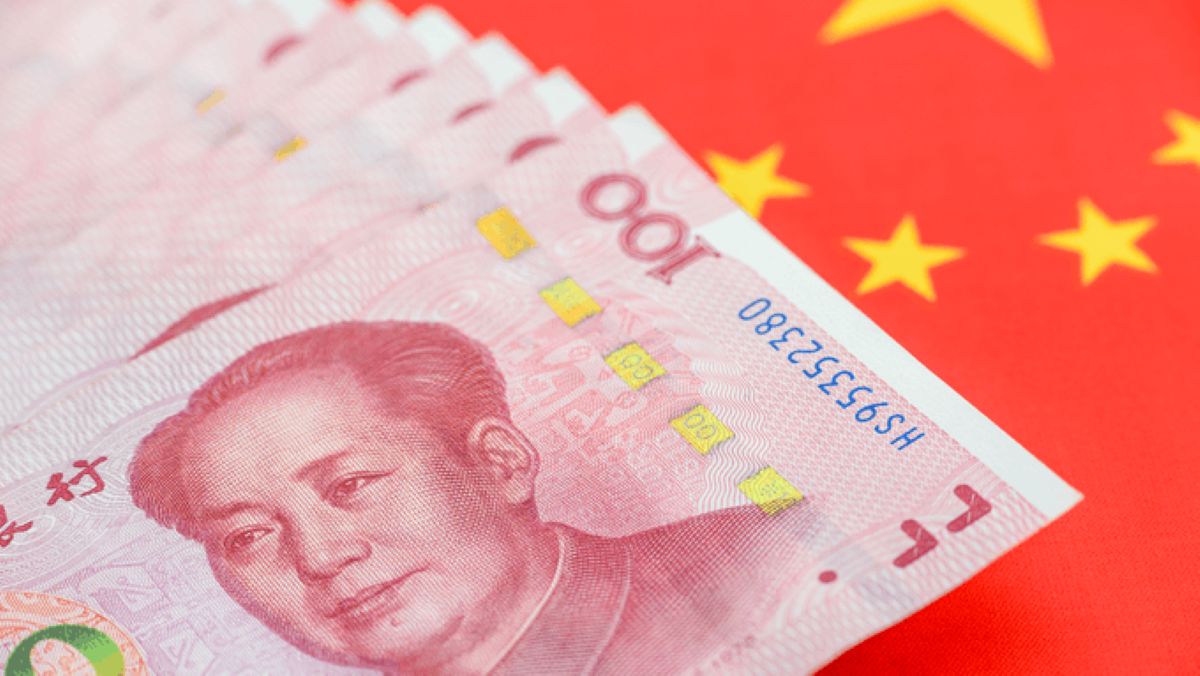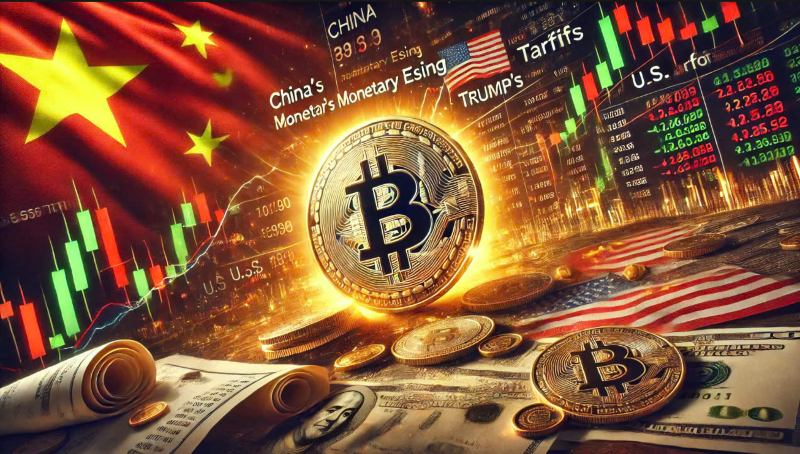China launched “the monetary easing policy of China” for the first time in 14 years, responding to Trump’s tariff threats. This bold move is reshaping global markets, particularly impacting Bitcoin’s price and the crypto landscape. How will “the monetary easing policy of China” influence Bitcoin amidst these trade tensions?

Contents
- 1 The Monetary Easing Policy of China Sparks Crypto Waves
- 2 China’s Monetary Easing Breakthrough: A Historic Shift After 14 Years
- 3 Linking China’s Monetary Easing to Bitcoin’s Value
- 4 Trump’s Tariffs and Bitcoin in the Shadow
- 5 Bitcoin’s prospects amid China’s monetary easing and Trump’s tariffs
- 6 China Monetary Easing and Bitcoin-Prospects and Pitfalls
The Monetary Easing Policy of China Sparks Crypto Waves
On March 5, 2025, Bitcoin.com News (BTCTN) revealed that China has launched “the monetary easing policy of China” for the first time in 14 years, responding to escalating tariff pressures from President Donald Trump. This bold economic maneuver isn’t just a domestic shift-it’s sending shockwaves through global finance, especially impacting Bitcoin and other cryptocurrencies. How does “the monetary easing policy of China” influence Bitcoin’s value, particularly with Trump threatening steep tariffs on Chinese imports? This piece unpacks these dynamics, shedding light on Bitcoin’s prospects and pitfalls in today’s volatile climate.
“The monetary easing policy of China” isn’t merely a local policy tweak; it’s unleashing a flood of liquidity that could either propel or pressure Bitcoin, depending on market sentiment and geopolitical currents. Let’s explore!
China’s Monetary Easing Breakthrough: A Historic Shift After 14 Years
“The monetary easing policy of China” introduces measures such as lowering interest rates, easing bank reserve requirements, and injecting fresh liquidity into markets through open market operations. As noted by ScienceDirect, past quantitative easing efforts globally-such as those by the U.S.-have often channeled funds into high-risk assets like Bitcoin. Facing economic slowdown and Trump’s tariff threats, “the monetary easing policy of China” seeks to revitalize growth and stabilize financial markets.
Yet, “the monetary easing policy of China” doesn’t directly affect Bitcoin due to China’s 2021 crypto trading and mining bans. Still, global investors may pivot to Bitcoin as an inflation buffer, driving its price upward as liquidity swells. S&P Global highlights that during liquidity-rich periods, Bitcoin often emerges as a “digital gold,” drawing substantial capital inflows.
Linking China’s Monetary Easing to Bitcoin’s Value
The monetary easing policy of China could boost Bitcoin’s price by expanding money supply and stoking inflation fears. As China floods its economy with liquidity, investors might seek Bitcoin to shield their assets from eroding value. According to pmc.ncbi.nlm.nih.gov, Bitcoin exhibits inflation-resistant traits, though it doesn’t always act as a safe haven during every economic storm.
The impact of “the monetary easing policy of China” hinges on its scope and how other central banks, like the U.S. Federal Reserve, respond. If the Fed mirrors this easing, global liquidity could surge, lifting Bitcoin. But if the Fed tightens policy, Bitcoin might face downward pressure due to liquidity jitters.
Trump’s Tariffs and Bitcoin in the Shadow
Trump’s tariff threats, including a 10% tax on all Chinese goods since February 2025, have rattled global markets. AP News reports that Bitcoin’s price plummeted after the tariff announcements but rebounded swiftly, fueled by speculation and liquidity from “the monetary easing policy of China.”
Trump’s tariffs could dampen investor confidence, pulling capital from risky assets like crypto. Yet, “the monetary easing policy of China” might offset this by boosting liquidity, offering a lift to Bitcoin. If trade tensions escalate, Bitcoin could be viewed as a hedge, though Cointelegraph cautions it doesn’t consistently serve as a safe haven during major disruptions.
Bitcoin’s price trajectory depends on balancing “the monetary easing policy of China’s” liquidity infusion with Trump’s tariff uncertainties. In the short term, Bitcoin might swing between $90,000 and $120,000. Over the medium term, if “the monetary easing policy of China” holds steady and tariffs ease, Bitcoin could soar past $150,000. But if trade wars intensify, prices might fall to $80,000–$90,000.
Bitcoin’s prospects amid China’s monetary easing and Trump’s tariffs
Long-term, “the monetary easing policy of China” could propel Bitcoin if global liquidity stays robust and investors continue seeing it as an inflation shield. However, risks like China’s stringent crypto rules and Trump’s tariffs could curb this upward trend.
To make informed predictions, follow updates from Bitcoin.com News, AP News, and economic reports from the Fed and the People’s Bank of China. “The monetary easing policy of China” opens new avenues for Bitcoin, but it also brings challenges requiring careful investment strategies.

China Monetary Easing and Bitcoin-Prospects and Pitfalls
The monetary easing policy of China, rolled out for the first time in 14 years amid Trump’s tariff threats, creates a nuanced landscape for Bitcoin and the crypto sphere. In the near term, Bitcoin’s price may climb with surging liquidity, but tariff-related volatility could drag it down. Over the long haul, if “the monetary easing policy of China” persists and global economics stabilize, Bitcoin could hit all-time highs.
Keep pace with Bitcoin.com News and trusted sources for the latest on “the monetary easing policy of China” and crypto market shifts. Invest prudently, diversify your holdings, and brace for volatility to thrive in this dynamic arena!
Stay updated on “the monetary easing policy of China,” Bitcoin’s price shifts, and Trump’s tariff impacts by follow Best Sniper Bots for the latest insights and market trends!
